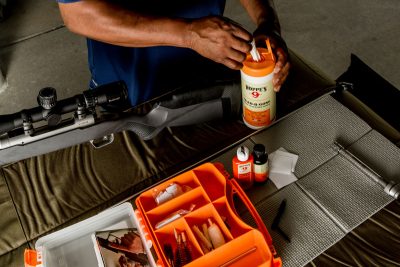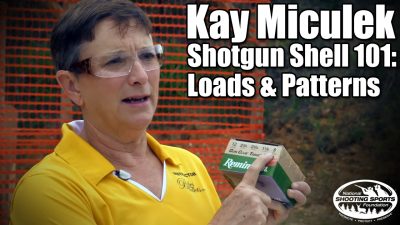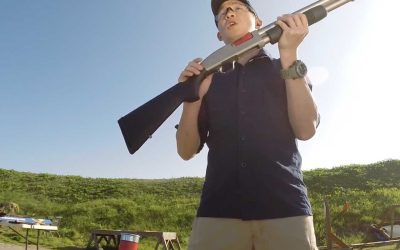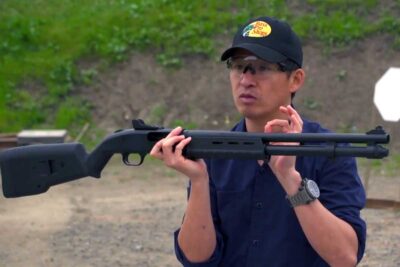Relic Remington Shotguns – Sixty Years Later and We Still Love Them
Author: Kat Commander Knott, GunBroker.com Contributor
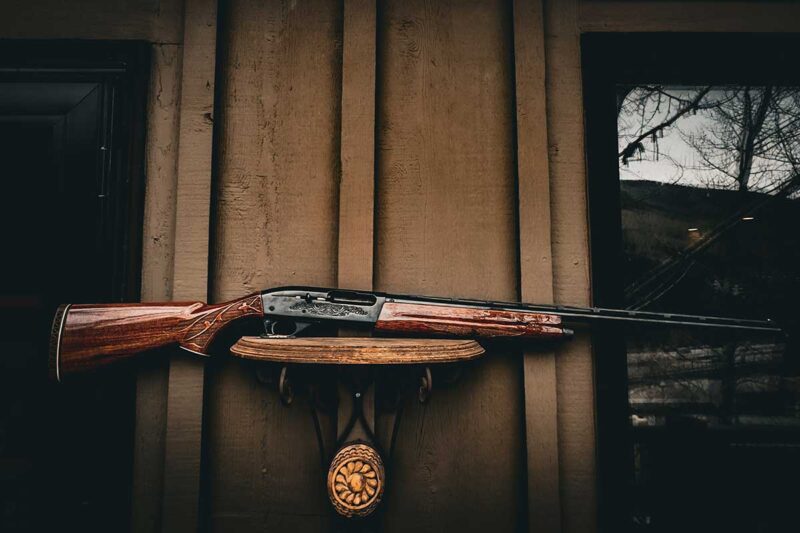
“These Relic Remington Shotguns are so beloved for good reason; they’re great shotguns that stand the test of time.”
Author Kat Commander Knott, GunBroker.com Contributor
For me, clay shooting sports are all about Remington Model 1100s and Model 11-87s. I love to shoot Sporting Clays, Five Stand, and Skeet. I’ll occasionally venture onto the Trap range but it definitely takes a back seat to the other three games as far as my love of clay shooting goes. I almost exclusively shoot clays with my many Remington semi-auto-loading shotguns. Other than looks, I absolutely love these Relic Remington Shotguns; model 1100s and model 11-87s for so many reasons. My mom, Ginny Commander, has passed her beautifully engraved over-unders, other semi-auto down to me. At this time of their lives, some of them cost as much as some cars do. But, I will take my decades old, tried and true 1100s and 11-87s over those pretty and far more expensive guns, every day of the week!
Just the fact that I still shoot my 25 year old Remington 11-87 Sporting Clays edition today as I’ve been doing for the last 25 years, speaks volumes about the quality and craftsmanship of these shotguns. Not only have they endured the test of time, but they still perform like the day they were brand new out of the box. I love the feel, how they swing and how comfortable they are on the clay course. I also find that they are far more fun for playing around and creating my own games like hitting quad simos on Five Stand. You can’t do quad simos with pretty over-unders, but you can with Remington 1100s and 11-87s!
“Simo” short for simultaneous, is a term in Clay Shooting that refers to simultaneously launched targets, typically just two. “Doubles” can and often does mean the same thing as “simos” however, it can also refer to two targets launched “on report” which means the second target is not launched simultaneously with the first but, upon firing at the first target. “Simos” clearly delineates that the doubles are not on report and launched simultaneously. Triples and quads launched simultaneously or on report are not a part of any of the official clay shooting games but, can be fun or simply good practice for upland bird hunting.
Sporting Clays Shooting with Relic Remington Shotguns
The first time I tried to crush quad simos on Five Stand with my Remington Model 11-87 Sporting Clays edition, it took a few hundred shells after I had already shot a few hundred earlier on the Sporting Clays course. I had not cleaned my 11-87 in the weeks prior and ran something like 27 boxes of 12GA in just two days at the range that week. Did my decades old Model 11-87 fail to meet the challenge? Nope! It’s pretty much what the Remington Model 11-87 was designed to do. Before delving into that, there’s a key question to address… How exactly do these two quite similar, beloved and iconic Remington shotguns, the Model 1100 and the Model 11-87, differ from each other?
What’s the Difference Between Remington Model 1100 and Model 11-87?
The Remington Model 1100 was first released in 1963. It was pretty revolutionary at that time as far shotguns went. The model 1100 supplanted the early gas operated models 58 and 878 and went on to become one of America’s most popular shotguns. Most shotguns in 1963 were still recoil operated and even the early gas operated models did not come anywhere close to the recoil reduction of the Model 1100. In the 20 years between 1963 and 1983, it attained the record as the most popular semi-automatic loading shotgun in American history in dollars. Four million Model 1100s have been sold. And the model hasn’t changed much over the last sixty years, except in that they have only become more coveted since production widely halted. Remington updated the 1100’s stock and some of its parts at various times and issued numerous variants and special editions over the course of the model’s history but the shotgun didn’t change significantly.
“Well, surely technology has advanced a great deal in that time since 1963. So there must be far better semi-auto shotguns on the market…” Not as much as one might assume! Yes technology has advanced and that’s what led to the 1987 release of the Remington Model 11-87. However the differences between the two models released 24 years apart and between today’s semi-automatic shotguns is not as much as one might think.
How does the 11-87 differ from the 1100? The Model 11-87 has a stronger action, it is lighter in weight and has a faster cycle rate. The stronger action allows it to handle more powerful loads. The 11-87 can accept both 2¾” shells as well as 3” shells without changing barrels which the 1100 could not do at the time. The model 1100 could accept either 2¾” shells or 3” shells dependent on the installed barrel. The more complex gas operation system that built upon the gas operation system of the 1100, allows the 11-87 to cycle shells faster and along with other features like the butt pad reduces recoil even more than its predecessor. The 11-87 also has a self-cleaning piston, which reduces the impact of dirt and grime on the shotgun’s action. The Model 11-87’s low maintenance, lighter weight, faster cycling and stronger action are exactly why it’s the perfect semi-auto shotgun for hitting quad simos at the clay range!
When I previously said “It’s pretty much what the 11-87 was designed to do” it really is. The Remington Model 11-87 cycles shells faster, so getting four shots off quickly is easier. It’s lighter weight allows you to swing it more easily so moving between four independently launched targets is less cumbersome. Shooting hundreds of shells without cleaning is not an issue due to the self-cleaning piston system. And the reduced recoil along with the lighter weight mean bruising and tired arms aren’t going to stop you as quickly. Anyone as stubborn as I am, can appreciate that.
My barrels are “Magportted” so I don’t usually feel much of a difference as far as recoil between my relic Remingtons and other semi-auto loading shotguns produced recently. When I recently tried out a friend’s new semi-auto shotgun, I could appreciate it but, I still prefer my Remingtons. Part of it may be that I’m stubborn and fail to give other platforms adequate time and use to adjust to them. But then again, why fix what isn’t broken for me? And Remingtons rarely break…not before many years of a lot of use. I have friends who are fanatical about cleaning their guns after every day at the range. The low maintenance of the relic Remingtons may not appeal to them as much as it does to me. Finicky firearms are not my forte, personally. I value reliability over looks, cost and maintenance.
I love these relic remington shotguns. So much so that I searched far and wide for the Remington Model 1100 Competition Synthetic and finally found one on GunBroker.com to add to my collection of Remington shotguns. And when I happened to come across a used rattlesnake skin wrapped Model 1100 on Gunbroker.com I simply had to purchase it. Remington Model 1100s and Remington Model 11-87s have become harder and harder to find. I’m not the only one who covets them! These relics are so beloved for good reason; they’re great shotguns that stand the test of time.
Related Articles: 12 Outstanding Guns From the Remington Custom Shop Guns
Related Articles: Gun Review: Remington 700 XCR Rifle [Video]















